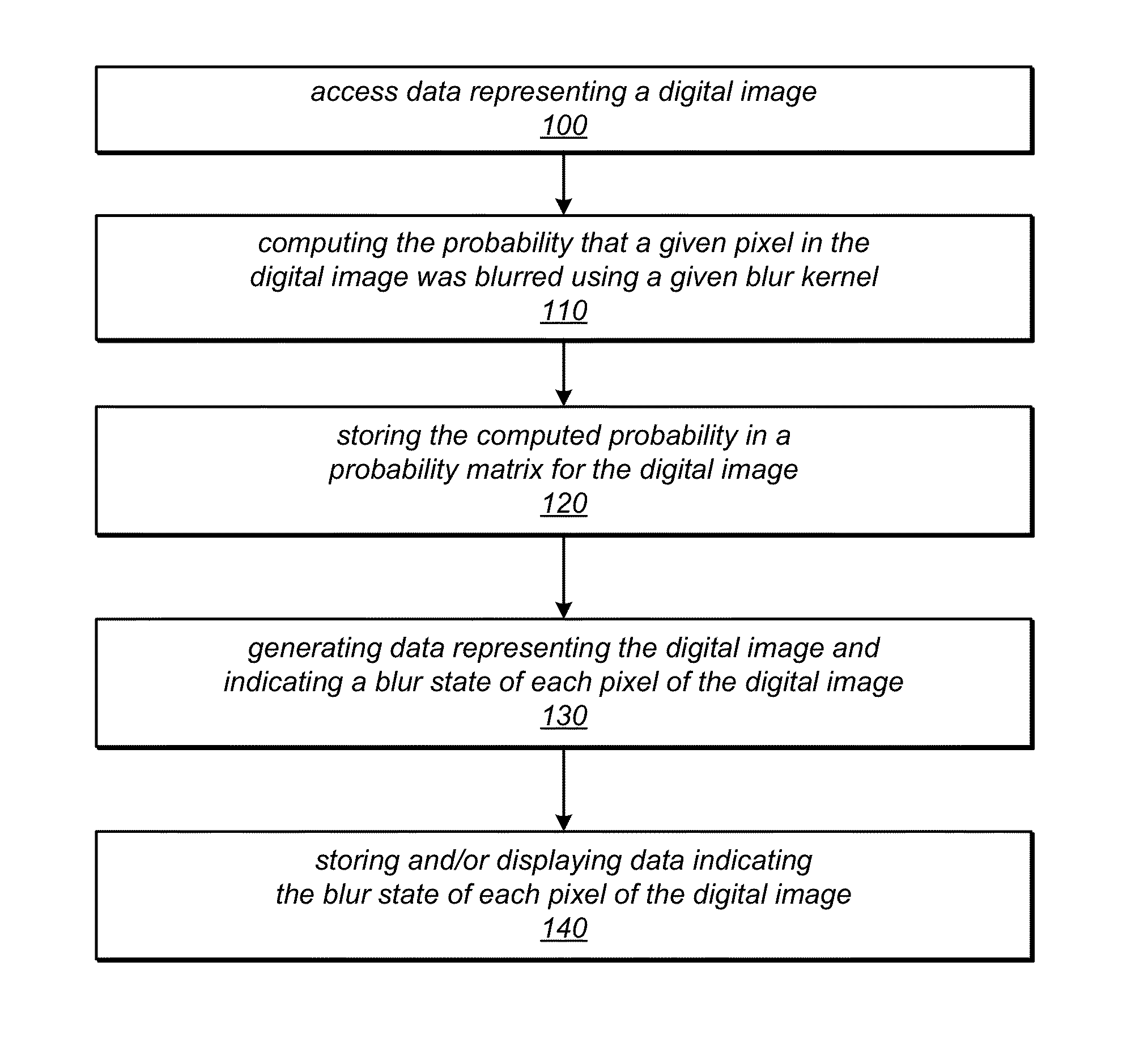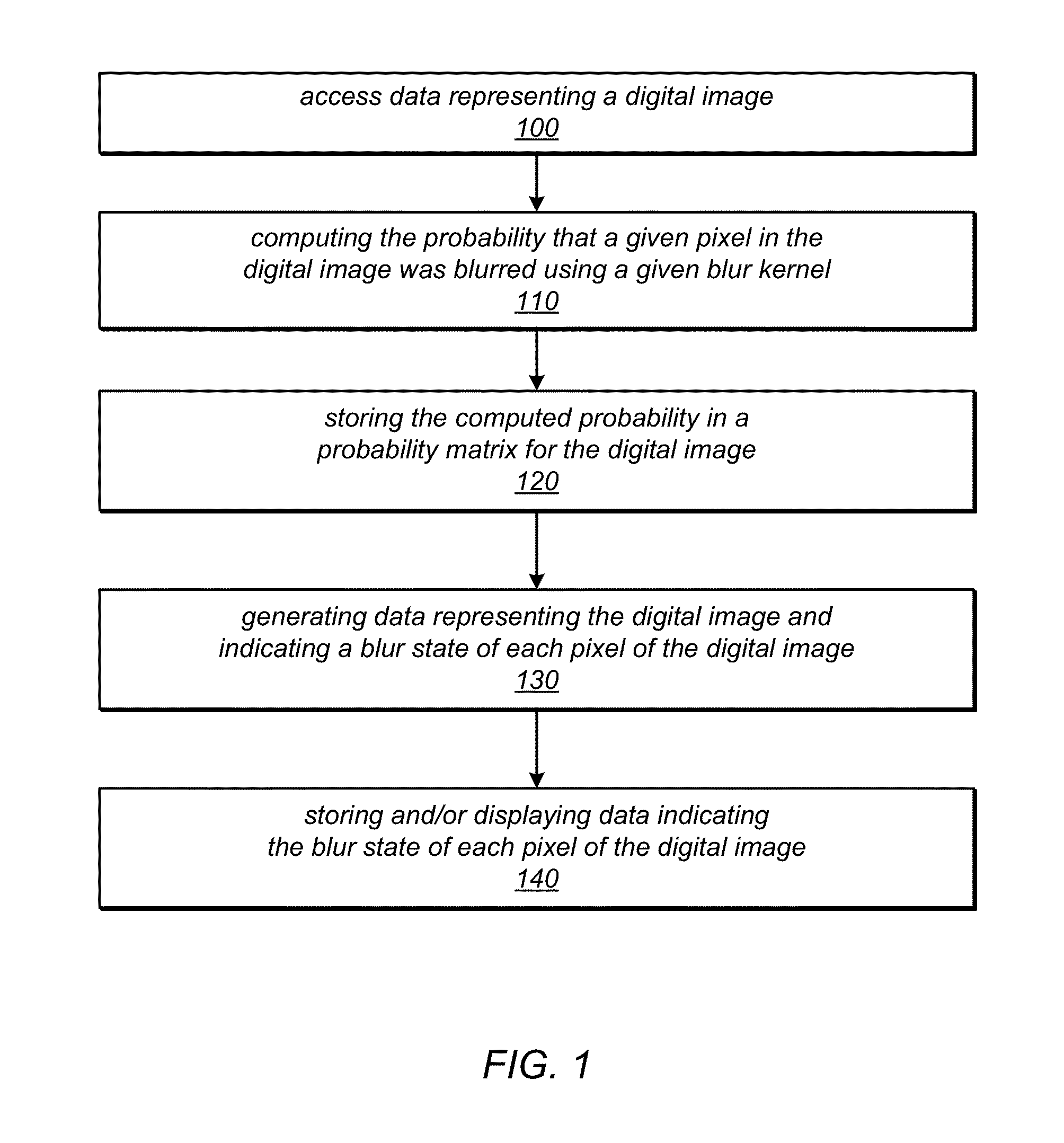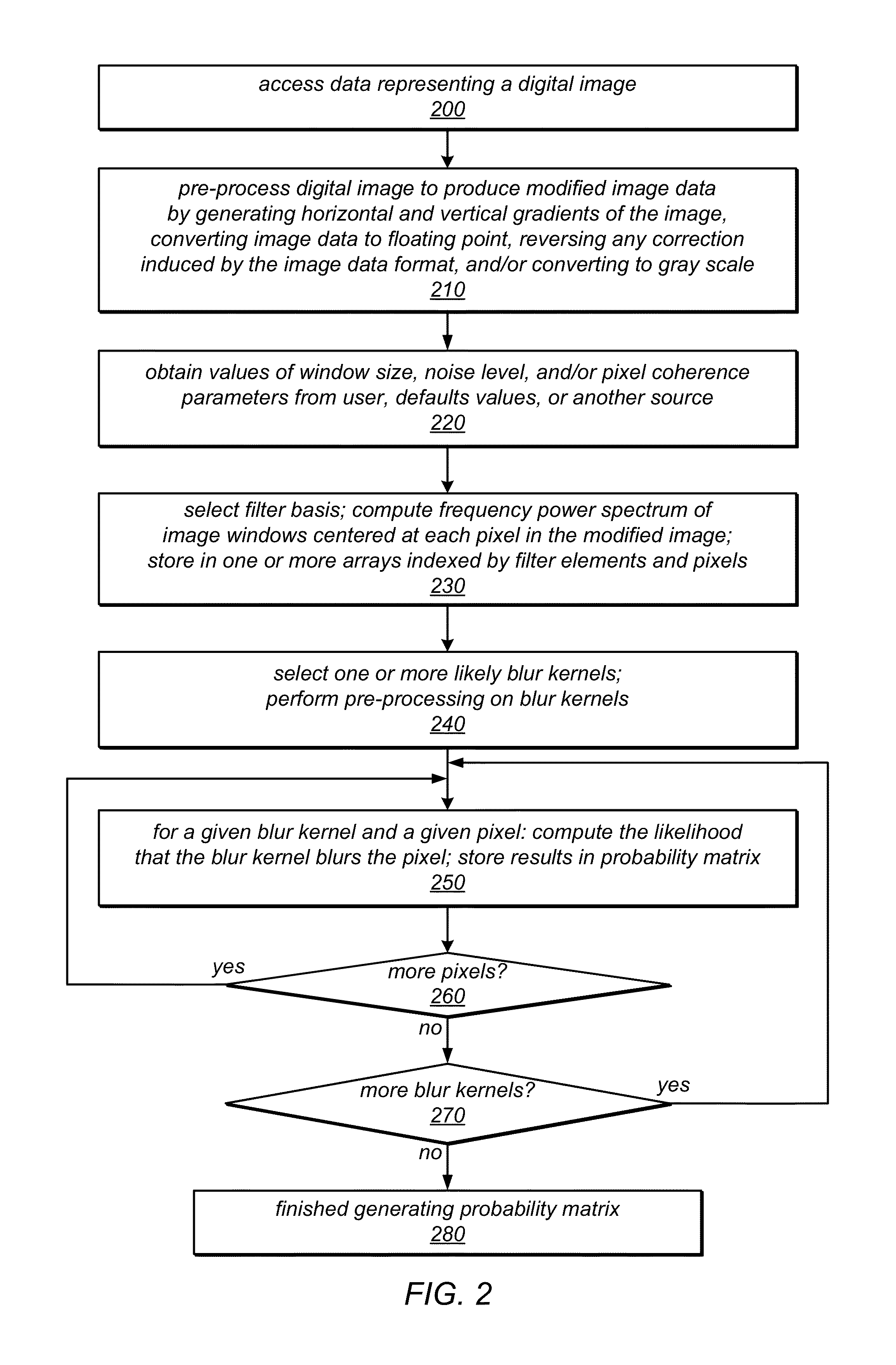System and method for classifying the blur state of digital image pixels
a technology of digital image and blur state, applied in the field of system and method for classifying the blur state of digital image pixels, can solve the problems of inability to accurately model the physical process involved, inability to accurately predict the physical process, and inability to accurately estimate the blur
- Summary
- Abstract
- Description
- Claims
- Application Information
AI Technical Summary
Benefits of technology
Problems solved by technology
Method used
Image
Examples
example implementations
[0137]FIG. 9 is a block diagram illustrating various modules that may implement the blur state classification techniques described herein, according to some embodiments. For example, FIG. 9 illustrates a blur classification module 920 that may implement one or more of the image editing techniques and tools described herein. Module 920 may, for example, implement one or more of: input image pre-processing, image window pre-processing (e.g., computing the power frequency spectrum of image windows), blur kernel pre-processing module (e.g., computing the frequency power spectrum for each blur kernel), blur classification probability matrix generation, coherent blur map generation, binary segmentation, and / or depth estimation. FIG. 10 illustrates an example computer system on which embodiments of module 920 may be implemented. Module 920 may receive as input one or more digital images 910. An example input image is shown in FIG. 2A. Module 920 may receive user input 912 specifying values...
PUM
 Login to View More
Login to View More Abstract
Description
Claims
Application Information
 Login to View More
Login to View More - R&D
- Intellectual Property
- Life Sciences
- Materials
- Tech Scout
- Unparalleled Data Quality
- Higher Quality Content
- 60% Fewer Hallucinations
Browse by: Latest US Patents, China's latest patents, Technical Efficacy Thesaurus, Application Domain, Technology Topic, Popular Technical Reports.
© 2025 PatSnap. All rights reserved.Legal|Privacy policy|Modern Slavery Act Transparency Statement|Sitemap|About US| Contact US: help@patsnap.com



